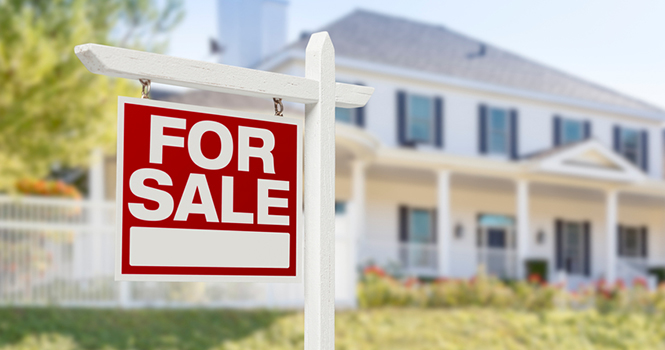Slowed by frustratingly low inventory levels in many parts of the country, existing-home sales lost momentum in July and decreased year-over-year for the first time since November 2015, according to the National Association of REALTORS®. Only the West region saw a monthly increase in closings in July.
Total existing-home sales, which are completed transactions that include single-family homes, townhomes, condominiums and co-ops, fell 3.2 percent to a seasonally adjusted annual rate of 5.39 million in July from 5.57 million in June. For only the second time in the last 21 months, sales are now below (1.6 percent) a year ago (5.48 million).
Lawrence Yun, NAR chief economist, says existing sales fell off track in July after steadily climbing the last four months. “Severely restrained inventory and the tightening grip it’s putting on affordability is the primary culprit for the considerable sales slump throughout much of the country last month,” he says. “Realtors® are reporting diminished buyer traffic because of the scarce number of affordable homes on the market, and the lack of supply is stifling the efforts of many prospective buyers attempting to purchase while mortgage rates hover at historical lows.”
Adds Yun, “Furthermore, with new condo construction barely budging and currently making up only a small sliver of multi-family construction, sales suffered last month as condo buyers faced even stiffer supply constraints than those looking to purchase a single-family home.”
The median existing-home price for all housing types in July was $244,100, up 5.3 percent from July 2015 ($231,800). July’s price increase marks the 53rd consecutive month of year-over-year gains.
Total housing inventory at the end of July inched 0.9 percent higher to 2.13 million existing homes available for sale, but is still 5.8 percent lower than a year ago (2.26 million) and has now declined year-over-year for 14 straight months. Unsold inventory is at a 4.7-month supply at the current sales pace, which is up from 4.5 months in June.
“Although home sales are still expected to finish the year at their strongest pace since the downturn, thanks to a very strong spring, the housing market is undershooting its full potential because of inadequate existing inventory combined with new home construction failing to catch up with underlying demand,” adds Yun. “As a result, sales in all regions are now flat or below a year ago and price growth isn’t slowing to a healthier and sustainable pace.”
The share of first-time buyers was 32 percent in July, which is below last month (33 percent) but up from 28 percent a year ago. First-time buyers represented 30 percent of sales in all of 2015.
All-cash sales were 21 percent of transactions in July, down from 22 percent in June, 23 percent a year ago and the lowest share since November 2009 (19 percent). Individual investors, who account for many cash sales, purchased 11 percent of homes in July, unchanged from June and down from 13 percent a year ago. Seventy percent of investors paid in cash in July.
According to Freddie Mac, the average commitment rate for a 30-year, conventional, fixed-rate mortgage dropped from 3.57 percent in June to 3.44 percent in July. Mortgage rates have now fallen five straight months and in July were the lowest since January 2013 (3.41 percent). The average commitment rate for all of 2015 was 3.85 percent.
NAR President Tom Salomone says in addition to affordability concerns, an issue seen earlier in the housing recovery may be reemerging. Realtors® are indicating that appraisal complications are appearing more frequently as the reason why a contract signing experienced a delayed settlement.
“Appraisal-related contract issues have notably risen over the past year and were the root cause of over a quarter of contract delays in the past three months,” he says. “This is likely a combination of sharply growing home prices in some areas, the uptick in home sales this year and the strong refinance market overworking the already reduced number of practicing appraisers. Realtors® are carefully monitoring this trend, and some have already indicated they’re extending closing dates on contracts to allow extra time to accommodate the possibility of appraisal-related delays.”
Coming in at the lowest share since NAR began tracking in October 2008, distressed sales – foreclosures and short sales – were 5 percent of sales in July, down from 6 percent in June and 7 percent a year ago. Four percent of July sales were foreclosures and 1 percent were short sales. Foreclosures sold for an average discount of 18 percent below market value in July (11 percent in June), while short sales were discounted 16 percent (18 percent in June).
Properties typically stayed on the market for 36 days in July, up from 34 days in June but down from 42 days a year ago. Short sales were on the market the longest at a median of 95 days in July, while foreclosures sold in 54 days and non-distressed homes took 34 days. Forty-seven percent of homes sold in July were on the market for less than a month.
Inventory data from Realtor.com® reveals that the metropolitan statistical areas where listings stayed on the market the shortest amount of time in July were Denver-Aurora-Lakewood, Colo., San Francisco-Oakland-Hayward, Calif., San Jose-Sunnyvale-Santa Clara, Calif., and Seattle-Tacoma-Bellevue, Wash., all at a median of 32 days; and Vallejo-Fairfield, Calif., at a median of 36 days.
“July’s existing home sales report is yet another telling sign that inventory is holding back overall progress in the housing market,” says Quicken Loans Vice President Bill Banfield. “New home sales data pointed to the root problem being addressed, as production ramped up and median sale price dropped, a strong indicator that builders are placing an increased focus on affordable homes.”
“The primary culprit behind the decline in July is the lack of homes on the market,” says realtor.com chief economist Jonathan Smoke. “We simply can’t see growth in sales without having enough homes to sell. This has been the case for 47 straight months, a situation that has bolstered home prices but made it tough for people to find a home for sale that meets their needs.”
Single-family and Condo/Co-op Sales
Single-family home sales decreased 2.0 percent to a seasonally adjusted annual rate of 4.82 million in July from 4.92 million in June, and are now 0.8 percent under the 4.86 million pace a year ago. The median existing single-family home price was $246,000 in July, up 5.4 percent from July 2015.
Existing condominium and co-op sales dropped 12.3 percent to a seasonally adjusted annual rate of 570,000 units in July from 650,000 in June, and are now 8.1 percent below July 2015 (620,000 units). The median existing condo price was $228,400 in July, which is 4.1 percent above a year ago.
Regional Breakdown
July existing-home sales in the Northeast descended 13.2 percent to an annual rate of 660,000, and are now 5.7 percent below a year ago. The median price in the Northeast was $284,000, which is 3.3 percent above July 2015.
In the Midwest, existing-home sales fell 5.2 percent to an annual rate of 1.28 million in July (unchanged from a year ago). The median price in the Midwest was $194,000, up 5.0 percent from a year ago.
Existing-home sales in the South in July declined 1.8 percent to an annual rate of 2.22 million, and are now 1.8 percent below July 2015. The median price in the South was $214,500, up 6.6 percent from a year ago.
Existing-home sales in the West rose 2.5 percent to an annual rate of 1.23 million in July, but are still 0.8 percent below a year ago. The median price in the West was $346,100, which is 6.4 percent above July 2015.
“Adding up the limited supply of houses for sale, a potential for higher mortgage rates on the horizon, and dampened consumer confidence, we’re less optimistic about fall sales,” says Smoke. “But things look positive over the medium to longer-term, especially since the housing market is ultimately driven mainly by demographics and employment, both of which are decidedly in favor of strong sales.”
For more information, visit www.realtor.org.











